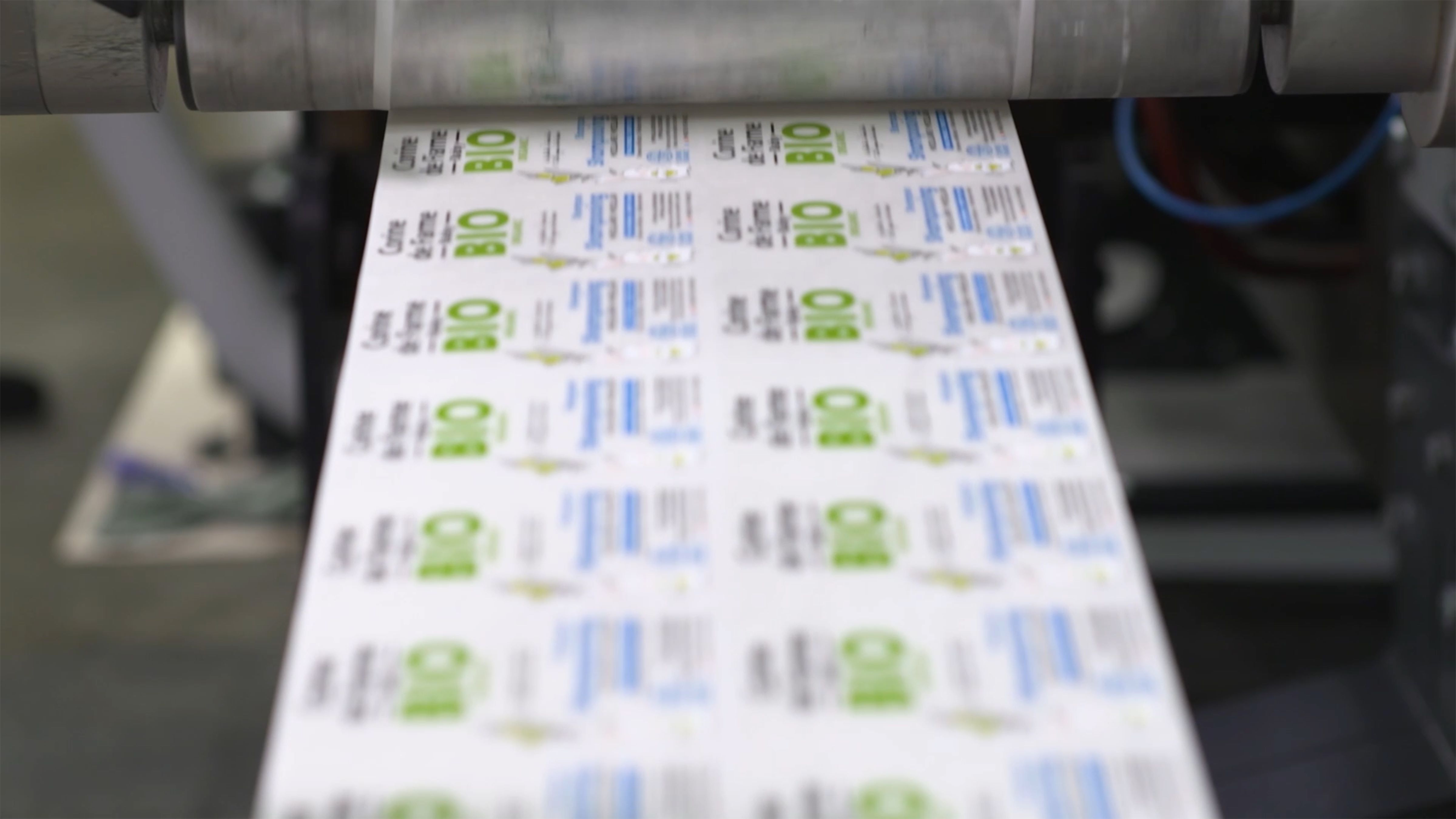 First integrated solution to simplify processes and expand offerings developed in collaboration
First integrated solution to simplify processes and expand offerings developed in collaboration
Esko and CERM have developed the world's first integrated solution that automates workflows for the production of complex labels. Belgium-based Asteria Group has benefited greatly from the automated workflows since implementation.
As part of the project, Esko, the global supplier of integrated software and hardware solutions that speed up the process of bringing packaged goods to market, collaborated with CERM, the leading developer of MIS for label and packaging converters. The goal: to develop a solution that simplifies processes and expands the product offering of Accent, an Asteria Labels & Packaging Group company.
"Accent wanted to make its workflow more efficient for producing its complex labels - from front and back printing, to hybrid labels printed with multiple printing technologies, to multi-layer labels such as duo and tri labels," said Ken Polspoel, Global Solutions Manager at Esko. "We pride ourselves on maintaining close business relationships with our customers and always listening to their needs. Therefore, when Accent approached us with their request, we immediately looked at how we could help solve the problem with our solutions."
Esko collaborated with CERM on the pilot project, continuing a partnership that began more than 10 years ago. "These discussions led to the development of an entirely new innovation that enabled Accent to automate and optimise much of its production of complex labels," explained Ken Polspoel. "The workflow improvements were based on CERM's business logic and then fully automated in Automation Engine. We are very excited to be the first to bring this new feature to market. Since our collaboration with Asteria Group, the solution has been implemented more than ten times in companies around the world, including Europe, Asia and the US."
Christophe Beke, Chief Technology Innovation Officer at Asteria Group, led the project for Accent. He explained that the challenge at the start of the pilot was primarily to automate the various variant and multiple label runs for one of their customers.
"Although the project represented only 5% of our total orders, the complexity of the print job meant that we hired both a graphic designer and a pre-press operator full time to handle the job as requested," said Christophe Beke. "As we were not able to handle the project with automated workflows, different files were needed for all steps. Now everything is fully automated and optimised, so there is no possibility of human error as the different files are now always loaded at the right time."
Among the benefits of the new integration with Esko Automation Engine is the ability to automate workflows for complex jobs - from combination printing to front and back printing. "The efficiency and productivity savings since implementing the new Automation Engine integration feature have been tremendous," said Christophe Beke. "A peel-off label that used to take us around four hours in prepress is now created by us in less than 30 minutes."
Ken Polspoel explained that innovations like this mean that companies looking to stand out from the competition and meet ever-increasing customer demands are now able to create complex labels in far fewer manual steps and in less time. "The need is largely dictated by market dynamics," says Ken Polspoel. "We have found that due to regulations and legislation, brands now have to put more information on labels than ever before. So label converters are always looking for new ways to achieve this without compromising on the brand's creative vision."
"We are also seeing an increase in what is known as hybrid or combination printing, where, for example, combinations of digital and flexo or screen printing are used on the same product. Producing such labels can be tricky, but with the Automation Engine and CERM MIS integration, the features of each printing process can be combined. Instead of splitting the print files, they can be created as one file - and completely automated!"
The final integration was completed by Esko and CERM at the end of 2021 and the system is currently being implemented at other Asteria Group sites and other companies worldwide.
"The goal in developing these integration interfaces was to facilitate the pre-production of not only standard labels, but also more complex labels," Ken Polspoel continues. "By simplifying this process, there are even additional opportunities for the production of higher-value labels, such as those with foil finishes. The solution not only facilitates the production of more visually appealing labels, but also the development of more complex labels as part of innovative marketing and customer loyalty campaigns."
"The success of the pilot project with Asteria Group and the subsequent implementation of the integrated features is further evidence of our close partnership with CERM, a company we have worked with for more than ten years and with whom we have jointly implemented more than 100 projects," said Ken Polspoel.
www.esko.com










































































